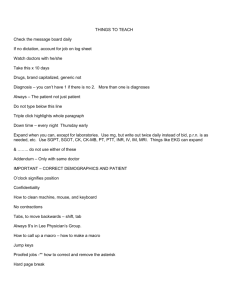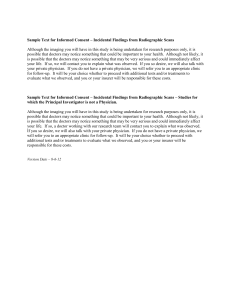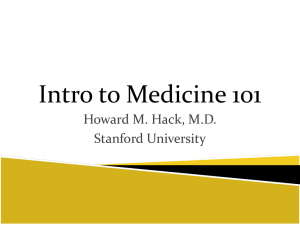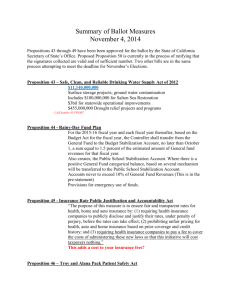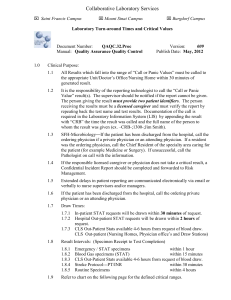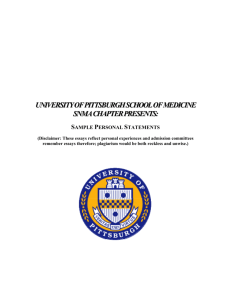Evaluation of medical records
advertisement
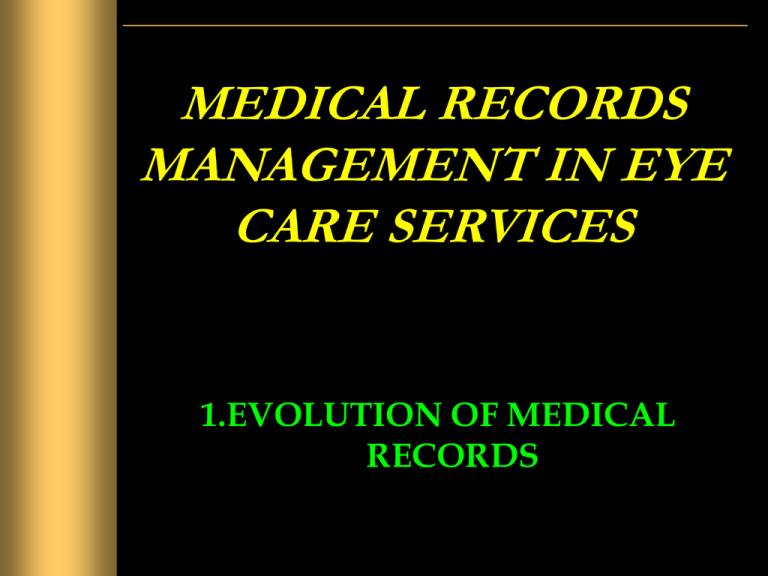
MEDICAL RECORDS MANAGEMENT IN EYE CARE SERVICES 1.EVOLUTION OF MEDICAL RECORDS History Egyptian period: First real physician of record is Imhotep. Lived in pyramid age. He was a grand vizier, chief architect, and royal medical advisor to a pharaoh before Christ. History Greek Period: Introduced scientific spirit into the art of healing. Aesculapius is the most venerated physician of all times. He is credited with curing many who were so ill that they not were expected to survive. History Greek Period: Hippocrates was the “Father of Medicine” born in year 460 B.C. He drew the rudiments of his medical knowledge from the reports of cases collected from Aesculapius at Cos. During the period of 19th century, Massachusetts General Hospital in Boston has the distinction of having a complete file of clinical records, with all cases catalogued dating from the day it was opened. Development of Medical Records To provide complete care to the patient, the skills of many medical and allied health specialists are required. This team consists of physicians, nurses, refractionsists, counselors and numerous allied health personnel. They inform and advise each other through their entries in the records about their findings, observations, opinions and, treatment of the patient. What is a Medical Record? Good medical care generally means a good medical record. Medical records store information concerning the patient and his care. Medical record must contain all relevant details to clearly identify the patient, to support the diagnosis, to justify the treatment, and to record the results accurately. A written medical record must be maintained on every person who has been admitted to hospital. Flow chart of out-patient Care New Registration Patient guided to vision room Preliminary examination by doctor Present illness, complaints & family history recorded If needed, Refraction done Patient undergoes B.P/Eye tension/Urine sugar test If needed, dilation done Patient sent for final examination & diagnosis Glass prescription/Medicine prescription given Patient sent home with follow-up advise Uses of Medical Records To record the patient’s problem, history, and treatment given either as out-patient or inpatient. To form a bridge between the doctors and other paramedical professionals contributing to patient care. To give continuity in treating the patient during subsequent visits or admission. To assist in protecting the legal interests of the patient, the hospital, and the doctors. To provide data for any research, study or education. To review the quality of treatment given by doctors, nurses and other paramedical professionals. To provide data for any third party agencies connected with the patient, doctor and hospital. Value of Medical Records To Patient For Teaching Value of Medical Records For Research Activity To Hospital To Physician Key points to remember The earliest records were primitive in form and very different from the present Medical records, but they served to record medical achievements for later generations. Mrs. Grace Whiting Myers was the first president of the association of Records Librarians of North America and honorary president of the American Medical Records Association. A Medical record must be maintained on every person who has been admitted to the hospital as an in-patient, out-patient or as an emergency patient. Key points to remember The content of the Medical record is developed as a result of the interaction of the members of the healthcare team who use it as a communication tool. The purpose of Medical records is to serve as a basis for continuity in the evaluation of the patient’s condition and treatments. Medical records are useful in protecting the legal interests of the patients, the hospital, and the doctors , and to provide data for use in research and education. Answer the following 1) Identify the following persons or organizations. - The first medical record librarian. - The first Egyptian physician of record. - The god of letters. - The “Father of Medicine” 2) Trace the history of Medical records through the Egyptian, Greek and GrecoRoman periods. 3) Identify six uses of medical records. Answer the following 4) Discuss the value of medical record to each of the following. - The patient - The Physician - The hospital 5) Describe the development of medical records in the hospital.
